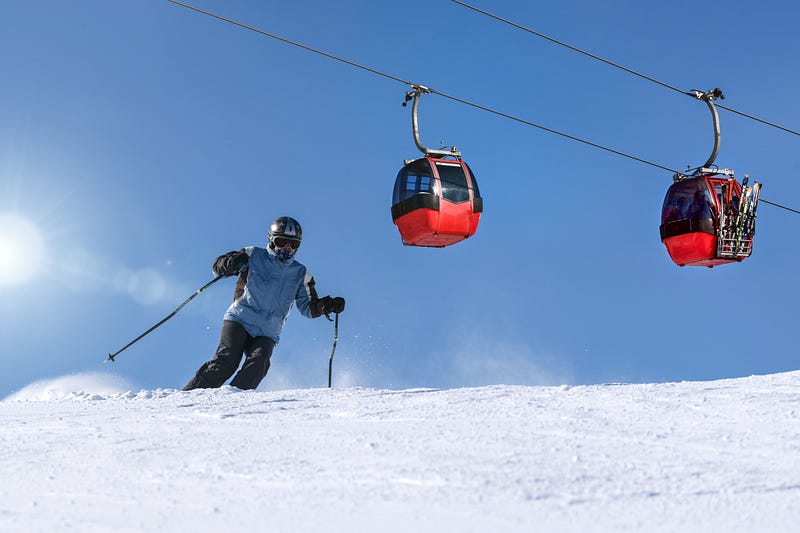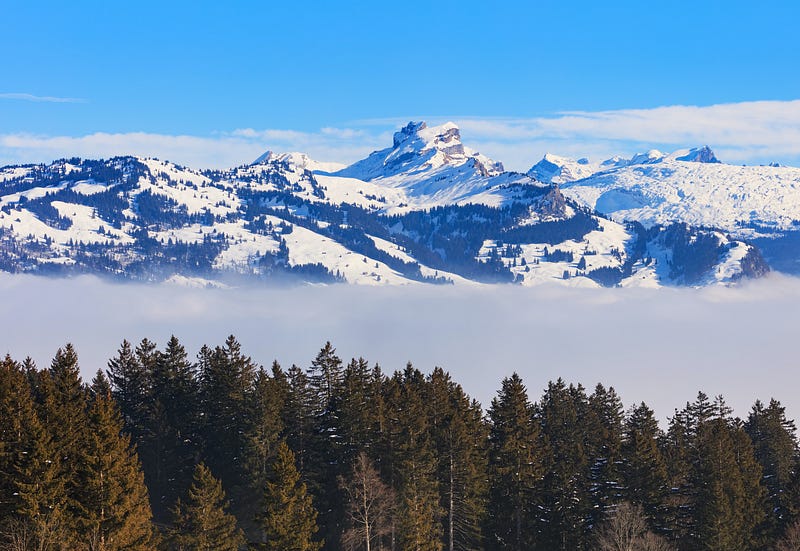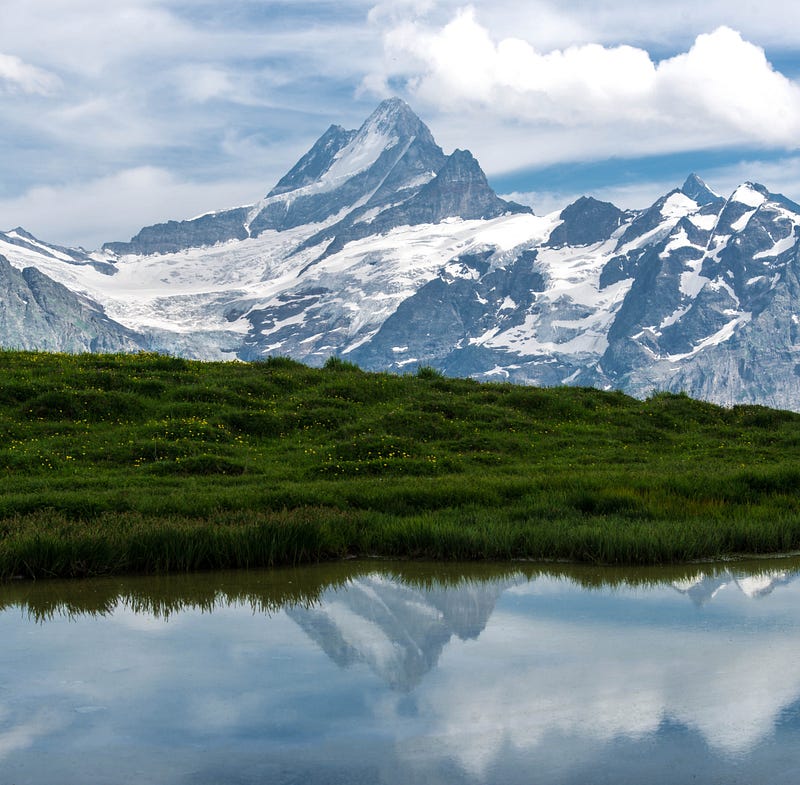The Future of Skiing: Challenges with Artificial Snow in the Alps
Written on
The Dwindling Snow: An Overview
When you think of winter vacations, do you picture hitting the slopes? Recent simulations for the Swiss ski destination of Andermatt-Sedrun-Disentis suggest that by the century’s end, maintaining ski trails—even with artificial snow—could become increasingly challenging.

The Alps have long been a favorite destination for winter sports, attracting over 40% of all skiers. The region, known for its rich skiing history, saw the first ski lift erected in Davos in 1934, and the inaugural Winter Olympics took place in Chamonix a decade prior.
However, the current outlook for these resorts is grim. The impact of climate change is being felt more acutely in the Alps than in many other regions, with temperatures rising by approximately 2 degrees Celsius over the past decade—double the global average.
The Impact of Climate Change on Snowfall
This rise in temperature has dire consequences. Glaciers are melting at an accelerated pace, and projections suggest that by the end of this century, summer could see an absence of glaciers in the Alps. Snowfall is becoming less frequent and does not last as long as it used to, leading to more winters devoid of snow. Last year, about half of Switzerland's ski areas had to rely on artificial snow to remain open.
Producing artificial snow comes with significant environmental costs, consuming large quantities of water and energy. The production process requires specific weather conditions: low temperatures and low humidity are essential. In conditions of low humidity, snowmaking can occur even at positive temperatures, but when humidity is high, the temperature must drop below -2 degrees Celsius.

Dr. Erika Hiltbrunner from the University of Basel highlights a fundamental issue: “The laws of physics themselves place limits on the production of artificial snow.” Her research team conducted simulations for the Andermatt-Sedrun-Disentis resort, which boasts 165 kilometers of ski trails and numerous lifts. They aimed to determine whether maintaining snow cover for 100 consecutive days during the holiday season would be feasible.
The researchers found that while a 100-day ski season with artificial snow is possible, it would only be sustainable in the higher elevations, specifically above 1,800 meters. Moreover, achieving a snowy Christmas season—even artificially—could be problematic in the Sedrun area.
The Ecological Costs of Maintaining Snow
Sustaining snow in these upper regions will come at a significant ecological cost. Currently, the resort consumes about 300 million liters of water annually for snowmaking, but projections suggest this could rise to 540 million liters by century's end. In particularly dry seasons, this demand could increase dramatically. For example, during the winter of 2017, the water usage for snowmaking in one area tripled due to a lack of natural snow.

Water sources for snowmaking are becoming a critical concern. The resort currently draws water from Lake Oberalpsee, which supplies about 200 million liters per year. This lake is also essential for hydroelectric power generation.
Dr. Maria Vorkauf, the lead author of the study, states, “We anticipate that in the future there will be a conflict between the demand for water for the resort and that for energy production.” As a result, the resort will need to explore alternative water sources.
Looking Ahead: The Future of Andermatt-Sedrun-Disentis
In the short term, Andermatt-Sedrun-Disentis may benefit from an influx of tourists migrating from lower resorts that may close. However, over the long haul, the financial burden of maintaining artificial snow will likely make skiing a luxury only for the affluent.
Here’s a video discussing the impact of climate change on snowmaking in the Alps, particularly focusing on the use of artificial snow.
This video highlights the struggles faced by Boston Mills ski resort due to insufficient natural snow, illustrating the broader challenges affecting winter sports.
Source: phys.org, The Conversation, International Journal of Biometeorology